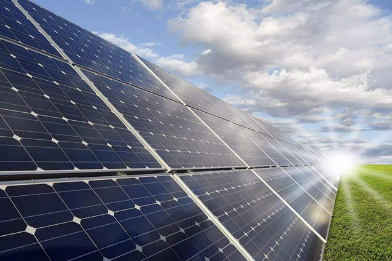Last year in 2019, ACE has successfully collected 2,410 energy news from various media, providing our loyal subscriber weekly update on what is happening in the region. Observing the archive, there are three sectors which were most reportedthroughout the year:Solar, Electricity, and Electric Vehicle.
In this insight, let us give you a glance of the full story from ASEAN solar sector by picking the worth to be highlighted news throughout the year.
Paving solar growth through new solar policies
Solar news was the most collected in 2019, amounted 10% of the total news in our archive. This indicates that the ASEAN solar sector is going in the right direction. The new policies were established in several countries in ASEAN, hoping to spur the growth of solar.
One update of policy revolved around the net-metering scheme from Vietnam andThailand. Vietnam has replaced net-metering method for rooftop solar projects with the direct consumption-direct supply method. With the new method, buyers will now directly or separately pay for the amount of electricity that is sold to them. Vice versa, sellers also need to directly pay for the electricity they consume from the grid. In the other hand, Thailand has also launched a net-metering scheme for residential PV for the generation capacity up to 10 kW. The net metering tariff was 5.2 USD cent/ kWh (or THB 1.68/kWh) and set for 10 years which is substantially lower than the current residential power price of THB 3.8/kWh.
There was also an update of the Feed-in-Tariff (FiT) mechanism in Vietnam. Vietnam amended their Feed-in-Tariff (FiT) policy for solar to be based on regions, as the first round of FiT has been closed in June 2019 which earned a huge success causing solar boom. The new FiT offered is in a range, from 6.59 to 9.85 US cents/ kWh starting in July 2019, instead of a fixed rate as the previous one. This change is to optimize solar investment even in the cloudiest corners of the country.
Other than net-metering and FiT, auction or competitive bidding as a new type of policy for RE was also introduced in several ASEAN countries. After several successful pilot projects in Cambodia, the country was introducing new projects in the form of competitive bidding. There were four tender projects of 60 MW was offered under Built-Own-Operate (BOO) scheme.
Meanwhile, Malaysia has opened the third round of Large-Scale Solar (LSS3) with an estimated RM2 billion worth projects. This competitive bidding process was effective to drop down the solar tariff to be as low as MYR 0.1777 or USD 0.042 cents/kWh for 500 MW tender, which is lower than the cost of gas-fired power generation which was MYR 0.32/kWh. These supporting program and policies not only help the solar market to flourish but also leads to creating green jobs creation. Malaysia is running to be ASEAN’s biggest solar employer. According to IRENA report, Malaysia is sixth globally in the top solar PV employers, making it the only ASEAN countries that made it into big five. The job created in solar in Malaysia is in component manufacturing which approximately reached 17,000.
ASEAN solar sector is booming beyond the expectation
With the supportive policy environment, no wonders that solar growth does the boom in several countries. The world is shaken by a surprisingly shining bright solar market in Vietnam. Vietnam was becoming a solar giant last year as the solar installation skyrocketed in two years since Feed-in-Tariff (FiT) was enacted. By June 2019, the country hit 4.5 GW solar installation, which exceeds Australia’s capacity, or the rest of ASEAN countries combined as the round of the first FiT closed. It is also reported that in September, ASEAN largest solar farm began in operation in the southern Vietnam. The 420 MW solar installation, the largest of its kind, started production in Tay Ninh.
Promising growth of solar was also foreseen to happen in Thailand in the upcoming years. After the launched of the new Power Development Plan for 2018-2-37, Thailand’s solar power market was heating up with many listed companies planning to invest in the sector. The revised target under the new PDP is aiming to have 10 GW solar addition for household rooftops by 2037 and 2,7 GW floating solar.
ASEAN is eyeing floating solar to develop next
Several ASEAN countries are into floating solar. The technology is something that ASEAN shall explore as the region has vast potential, considering many water bodies and long-shore to be utilized. Singapore which has a geographical limitation of utilizing ground-mounted solar is developing the world’s largest floating solar arrays in the strait of Johor.
Electricity Generating Authority of Thailand (EGAT) also started the installation of five floating solars in five provinces since April 2019. The country planned to have 1,000 MW floating solar in combined capacity from eight hydropower plants in the next two decades.
The Philippineshas also explored floating solar by constructing a testbed in Southeast Asia’s third-largest lake, to evaluate whether the technology can withstand typhoons in Philippine’s stormy weather. Cambodia also completed a 2.8 MWp floating solar installed in water bodies at a cement plant.






